When we last checked in with the Philadelphia Maker Faire in 2019, one couldn’t help but be impressed with what the organizers had pulled off with just a fraction of the budget and resources it took to put on the defunct World Maker Faire in New York. We came away absolutely certain the event was on the verge of explosive growth, and that next year would be even bigger and better.
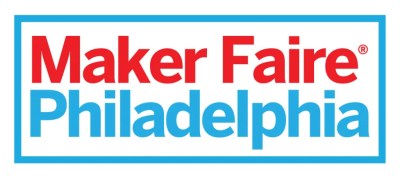 But of course, that didn’t happen. The COVID-19 pandemic meant that by the time the 2020 Faire should have kicked off, the logistics of holding a gathering much larger than a family dinner had become a serious hurdle. Philadelphia implemented strict rules on indoor and outdoor events to try and contain the spread of the virus, to the point that even when they were relaxed in 2021, it still didn’t make sense to try and put on a Faire under those conditions.
But of course, that didn’t happen. The COVID-19 pandemic meant that by the time the 2020 Faire should have kicked off, the logistics of holding a gathering much larger than a family dinner had become a serious hurdle. Philadelphia implemented strict rules on indoor and outdoor events to try and contain the spread of the virus, to the point that even when they were relaxed in 2021, it still didn’t make sense to try and put on a Faire under those conditions.
Thankfully things are largely back to normal-ish now, and as such the Philadelphia Maker Faire had something of a rebirth this year. Organizers decided to move the event to the Independence Seaport Museum, with vendor and exhibitor tables distributed throughout the museum’s three floors. This made the ticket price a great two-for-one value, especially if you had enough time left over to head out to the docks so you could explore the 130-year-old cruiser USS Olympia, and the USS Becuna, one of the last surviving WWII Balao-class submarines.
As you’d expect, the event was packed with fascinating projects and demonstrations, to the point that trying to list them all here would be impossible. But for those who couldn’t make the trip out to see what the 2022 Philadelphia Maker Faire had to offer, let’s take a look at a handful of the standout exhibits.
Long Live the Zine
There were actually two different exhibits dedicated to the zine — a tiny physical publication that you’d be forgiven for thinking went the way of…well, a great many niche printed publications. But as it turns out, at least in the Philly area, there are still groups out there that are producing their own short run works to document whatever they’re passionate about.
According to the Temple University students that have gone through the Makers, Hackers, Fixers course taught by Professor [Juris Milestone], there are a surprising number of zines being produced by local repair groups that either want to document what they’ve fixed or simply get the word out about the larger repair movement. They had a few fascinating examples on display, including a very clever fold-out “teardown” of an Xbox One, and some laser-cut panels which were used in a makeshift printing press to make pamphlets for a repair group.
I spent some time talking to the students and Professor [Milestone] about hackers and the maker movement, and was very impressed with the enlightened attitude the course had towards the community. They recognized that making can take many forms, ranging from a simply hobby to a necessary survival skill, and that the unfortunate Hollywood “hacker” stereotypes had nothing to do with how we use the term.
Documentation from the course explained that hackers are “those who are circumventing pre-existing barriers to find a new, more efficient way of completing tasks” and that the term “encompasses a broad range of individuals, not just those that specialize in computer science.” The course sounds like a welcome change from the sort of representation the hacker community has had to suffer through, and hopefully represents an evolving mainstream understanding of what we’re really all about.
Upstairs at the DIY Zines table, [Kara Khan] was less interested in what the zines were about than how they were made. The artist was conducting hands-on demonstrations of how a single piece of paper can be folded into a small pamphlet for rapid production, and had a collection of zines from the local area on display.
Das Blinkenlights
It’s no secret that hackers are attracted to mulit-colored blinking lights like moths to a flame, so it was no surprise when this table stopped me in my tracks. The wide array of illuminated gadgets, ranging from electronic fidget toys to functional rocket launch controllers, were the product of [Matthew Malham], and passerby were welcome to push buttons and flip switches to their heart’s content.
Making with Mushrooms
Using 3D printed molds, [Christopher Sweeney] has been able to coax mushroom mycelium and hemp to create recyclable lighting fixtures he calls MycoLights.
[Christopher] says the mycelium spends about a day inside the two-part 3D printed mold to pick up the basic shape, and is then removed and given more time to grow so the final density is higher. To stop the growth process, the fixture goes into the oven and is baked for a few hours. The result is a shade that’s strong and is unaffected by the temperatures you’d expect for home lighting applications. If you ever get sick of it, you can toss it in your compost pile.
The Science of Stitch
The only reason I even know what a tufting gun looks like is because Kristina Panos wrote up a post about the terrifying looking things earlier in the year. Later we talked about them on the podcast, and I seem to recall saying they looked like some cobbled together weapon from a horror film.
Anyway, while Hackaday taught me what these things looked like and what the did, it wasn’t until I walked through the 2022 Philly Maker Faire that I actually saw one being used and examples of what they are capable of thanks to the folks from [Tuft the World].
Still don’t know why they can’t cover up some of those moving parts, but I’ll admit the final result might be worth losing a fingertip for.
On the other end of the sewing spectrum, I also came across this interesting specimen while checking out the table for the Hive76 makerspace. Here we see a vintage Singer machine that’s been merged with a CNC platform capable of moving the workpiece while the machine is in operation.
The end result is a Steampunk-style DIY computerized embroidery machine that (probably) won’t take off one of your fingertips. Interestingly enough, I was told that the inspiration behind this machine was an old Hackaday post. I took a look through the archive, and it seems like this is the likely culprit.
Back in Business
From what I could see, the 2022 Philadelphia Maker Faire was an incredible success. Everyone I talked to was having a great time, and the general consensus seemed to be that the Independence Seaport Museum made a perfect backdrop for what’s ultimately an educational family event. If I had one regret, it’s that I wasn’t able to get there sooner to properly explore the museum itself.
If you’re within driving distance of Philadelphia, I’d highly recommend making the trip for the 2023 Faire. Who knows, maybe we’ll run into each other.

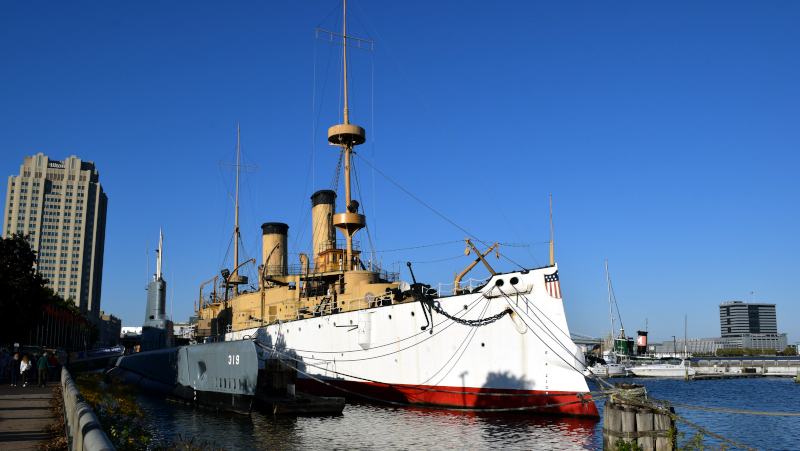


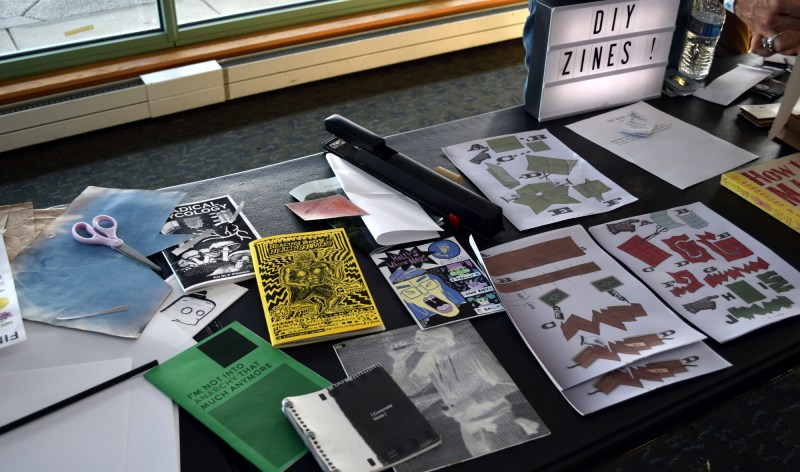


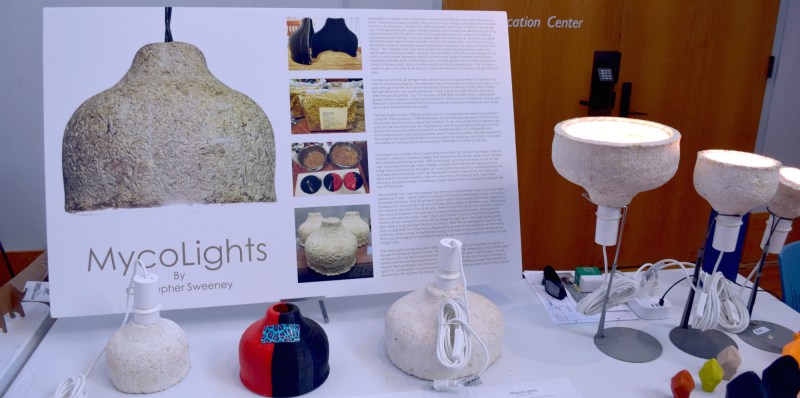


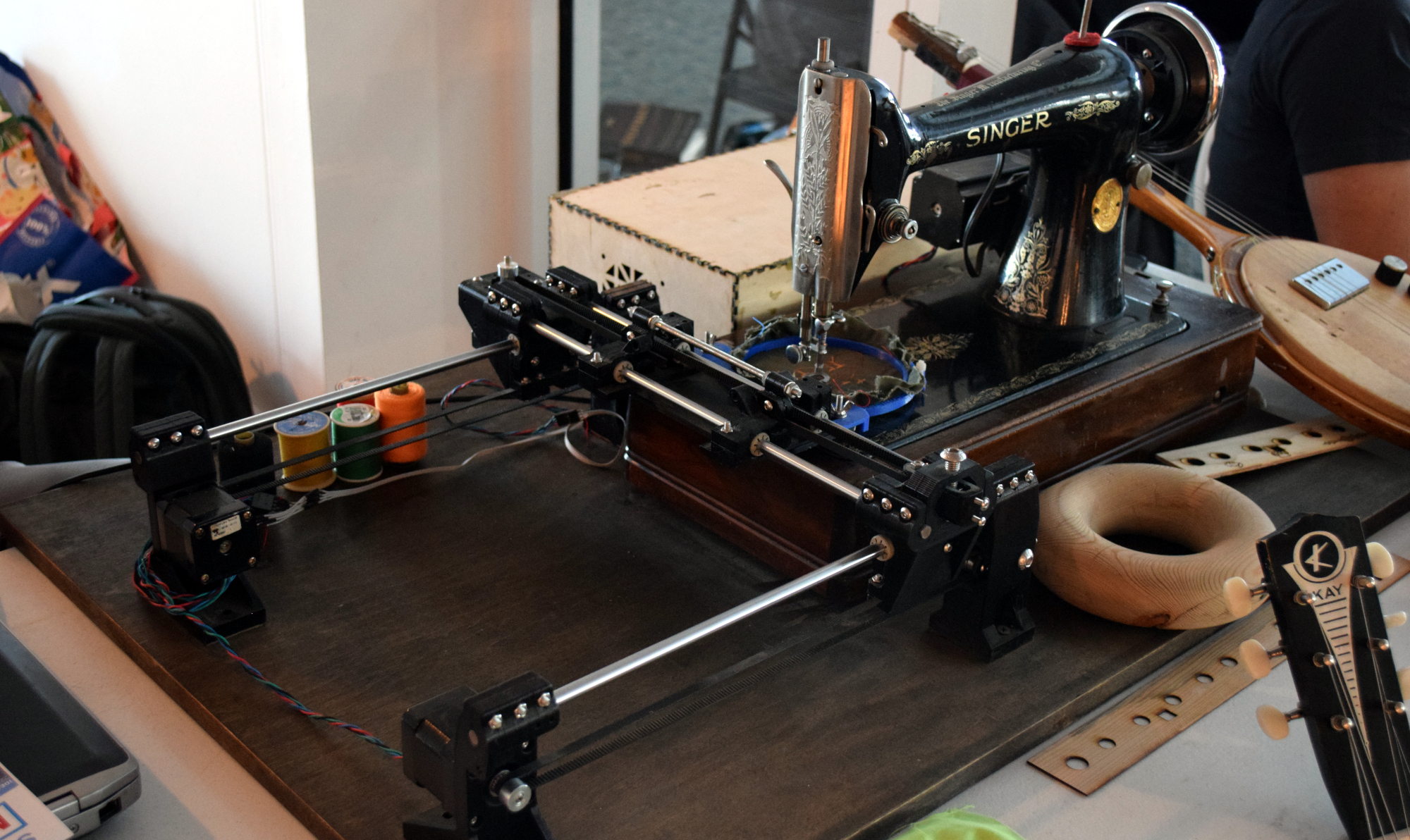













So bummed I couldn’t make it. Glad to hear it went well. Can’t wait for next year!
Don’t sell the now closed one in NYC short. The museum came back from historic flooding. So… the Maker Faire gang can revive the whole really big show soon. As for rebooting the big one out west that got us started, that’s a miracle that needs a few zebras to make it work.
We are working on an NYC one in Coney Island – check out ConeyIslandMakerFaire.com for more info!
I’m eyeing the lap steel or whatever it is behind the Singer on the right. Tennis anyone? Or badminton? Plug it in.
Fun fact it still has the strings on in the back, there is a wooden plate on top. We taught a few kids that some guitars need a slide! -Hive76 member